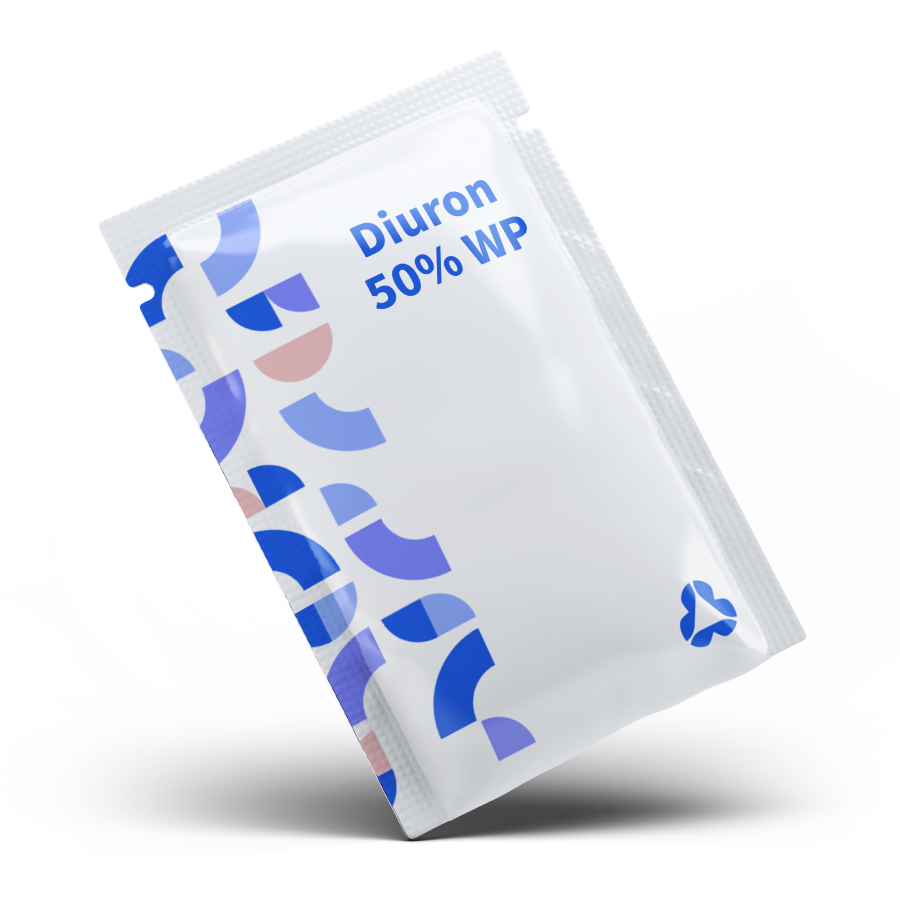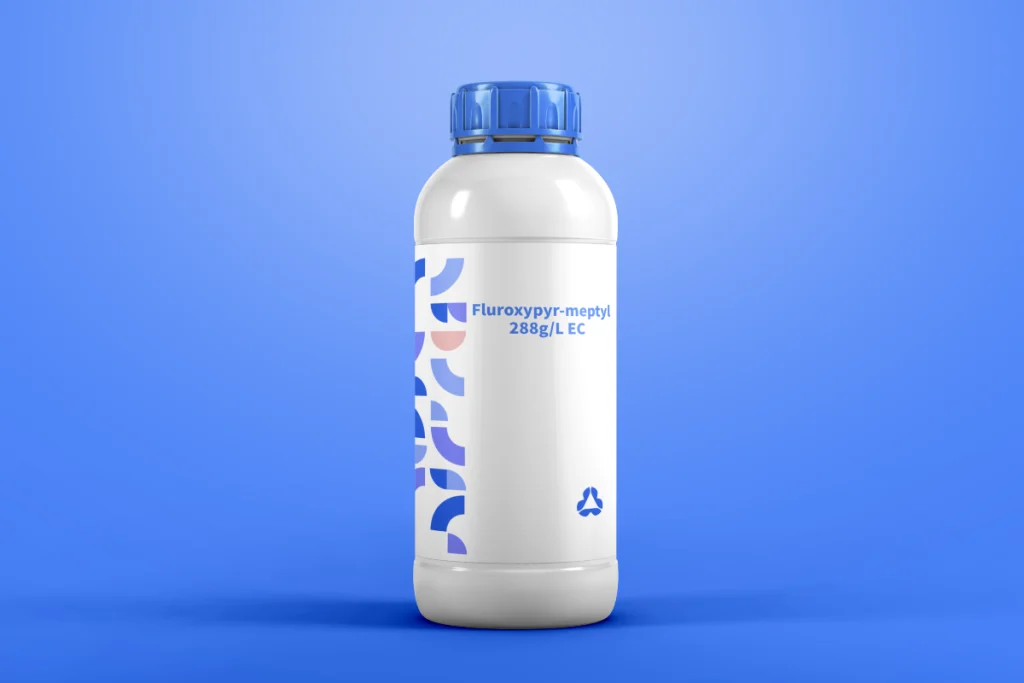Diuron is a selective herbicide from the urea family that inhibits photosystem II (PSII) in plants, blocking electron transport and disrupting photosynthesis. This leads to chlorosis, necrosis, and death of target weeds. It works both pre-emergence (absorbed by roots) and post-emergence (absorbed by leaves).
Key formulations exclude EC and SP, focusing on:
- 80% WP (Wettable Powder): Water-soluble powder for spraying.
- 500g/L SC (Suspension Concentrate): Stable liquid suspension for uniform coverage.
Diuron is registered for:
- Row crops: Cotton, sugarcane, potatoes.
- Perennial crops: Citrus orchards, vineyards.
- Non-crop areas: Railways, industrial sites, roadways.
- Annual grasses: Crabgrass, barnyardgrass, foxtail, green foxtail.
- Broadleaf weeds: Pigweed, lambsquarters, velvetleaf, amaranth.
- Limited perennial control: Suppresses bindweed and Canada thistle.
- Cotton: 1.0–2.0 kg a.i./ha (80% WP) pre-emergence.
- Sugarcane: 1.5–3.0 kg a.i./ha (500g/L SC) post-emergence.
- Potatoes: 0.5–1.0 kg a.i./ha (80% WP) pre-emergence.
Yes. Post-emergence application targets young weeds (2–4 leaf stage). Add a non-ionic surfactant (0.25% v/v) to enhance leaf absorption.
Diuron has a soil half-life of 30–90 days, providing 2–3 months of residual weed control. Activity is longer in alkaline soils (pH >7) and shorter in acidic conditions.
When used at labeled rates, Diuron is selective for cotton, sugarcane, and potatoes. Avoid contact with crop foliage during post-emergence application to minimize temporary chlorosis.
- Aquatic toxicity: Highly toxic to fish and algae; maintain 100 m buffer from water bodies.
- Soil mobility: Moderate leaching potential in sandy soils, posing groundwater risk.
- Degradation: Breaks down via microbial action and photolysis.
- HRAC Group 7: Rotate with Group 15 (e.g., S-metolachlor) or Group 2 (e.g., chlorimuron-ethyl).
- Tank mixes: Combine with herbicides of different modes of action (e.g., Diuron + glyphosate).
- Cotton: 60 days
- Sugarcane: 90 days
- Potatoes: 120 days
Consult local regulations for region-specific PHI guidelines.
No. Diuron is a synthetic herbicide prohibited in organic systems. Organic alternatives include mulching or mechanical weeding.
- Wear PPE: Gloves, goggles, long sleeves.
- Avoid inhalation or skin contact.
- Store in a cool, dry place away from food and water sources.
- Inhalation: Move to fresh air.
- Skin contact: Wash with soap and water.
- Ingestion: Do not induce vomiting; seek medical help with product label.
Sensitive crops (e.g., beets, crucifers, spinach) may require 6–12 months before planting. Tolerant crops like corn and soybeans can follow shorter intervals (4–6 months).
Yes, via chemigation for pre-emergence application in row crops. Ensure uniform distribution and follow label rates.
Yes, as a PSII inhibitor, Diuron works against weeds resistant to glyphosate (Group 9). Tank mixing enhances control of resistant biotypes like Palmer amaranth.
- 80% WP: 2–3 years when stored sealed at <30°C.
- 500g/L SC: 2 years; shake well before use to prevent sedimentation.
- Do not dump into water or soil.
- Dispose of empty containers according to local hazardous waste regulations.
Yes. Some countries restrict Diuron in sensitive areas (e.g., near water bodies). Always consult local agricultural authorities or the product label for compliance.




